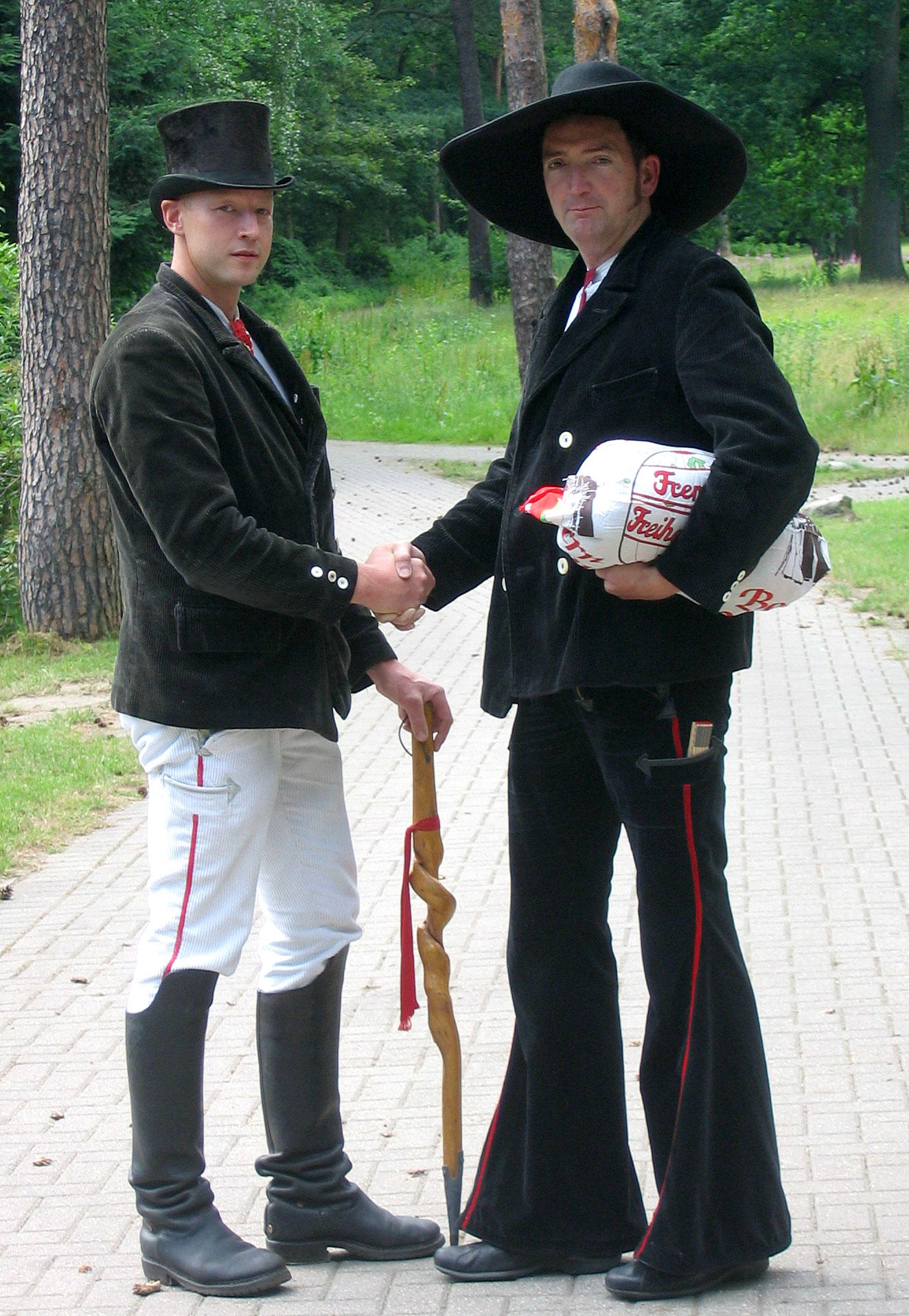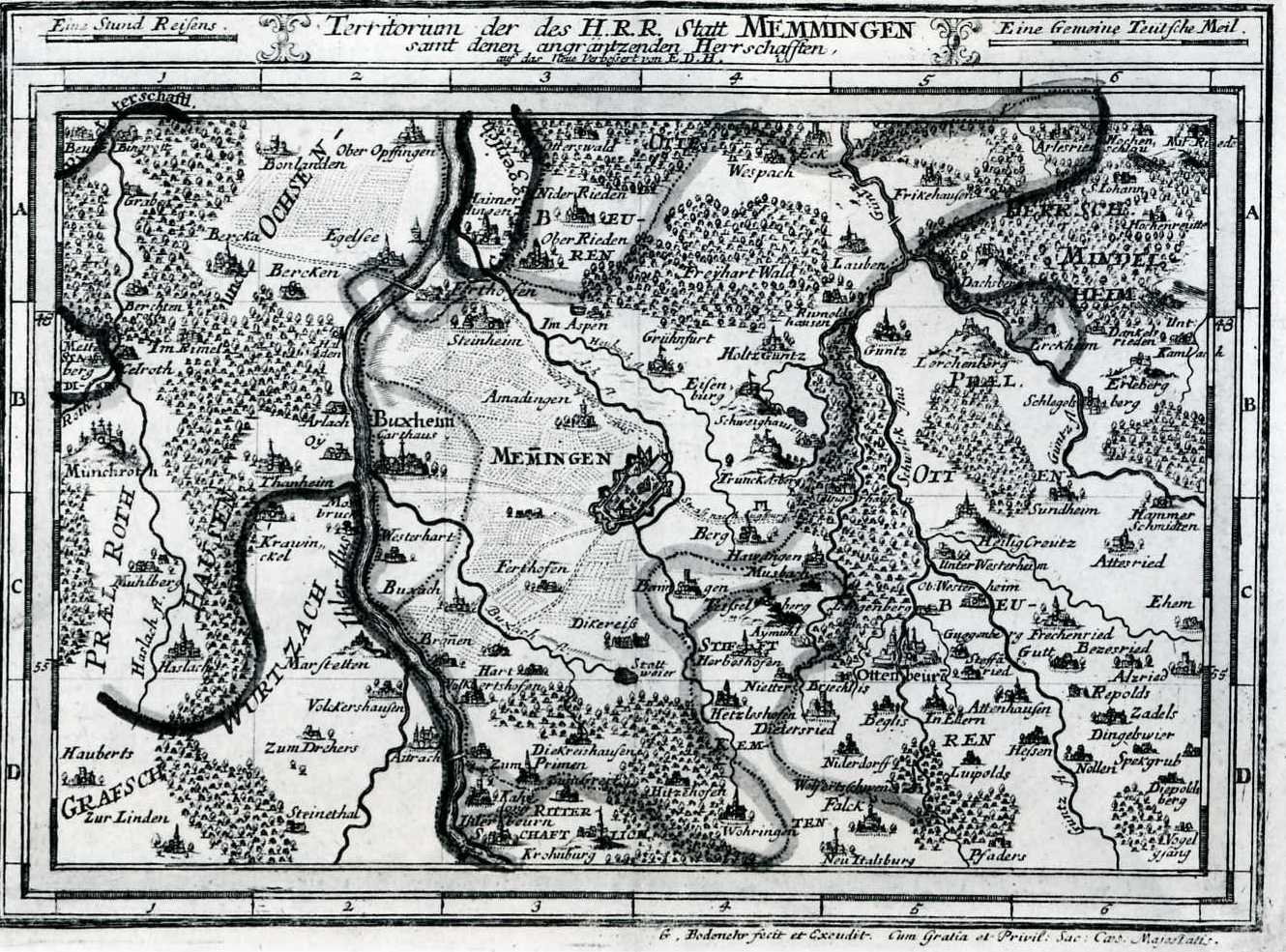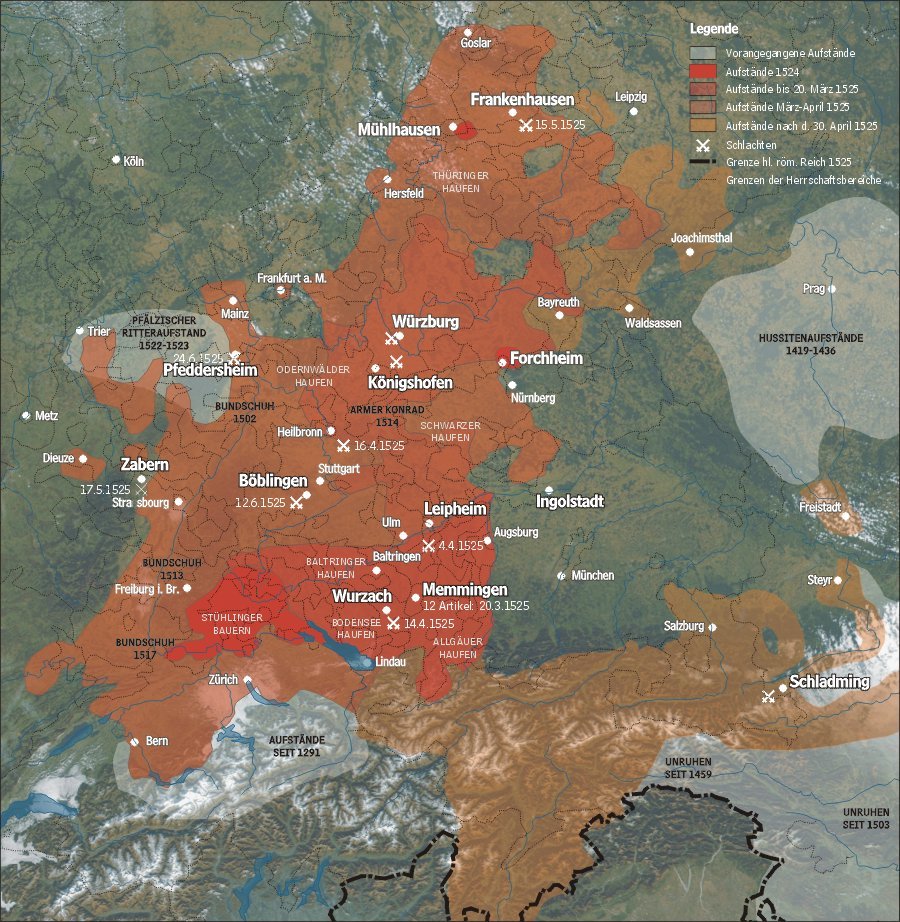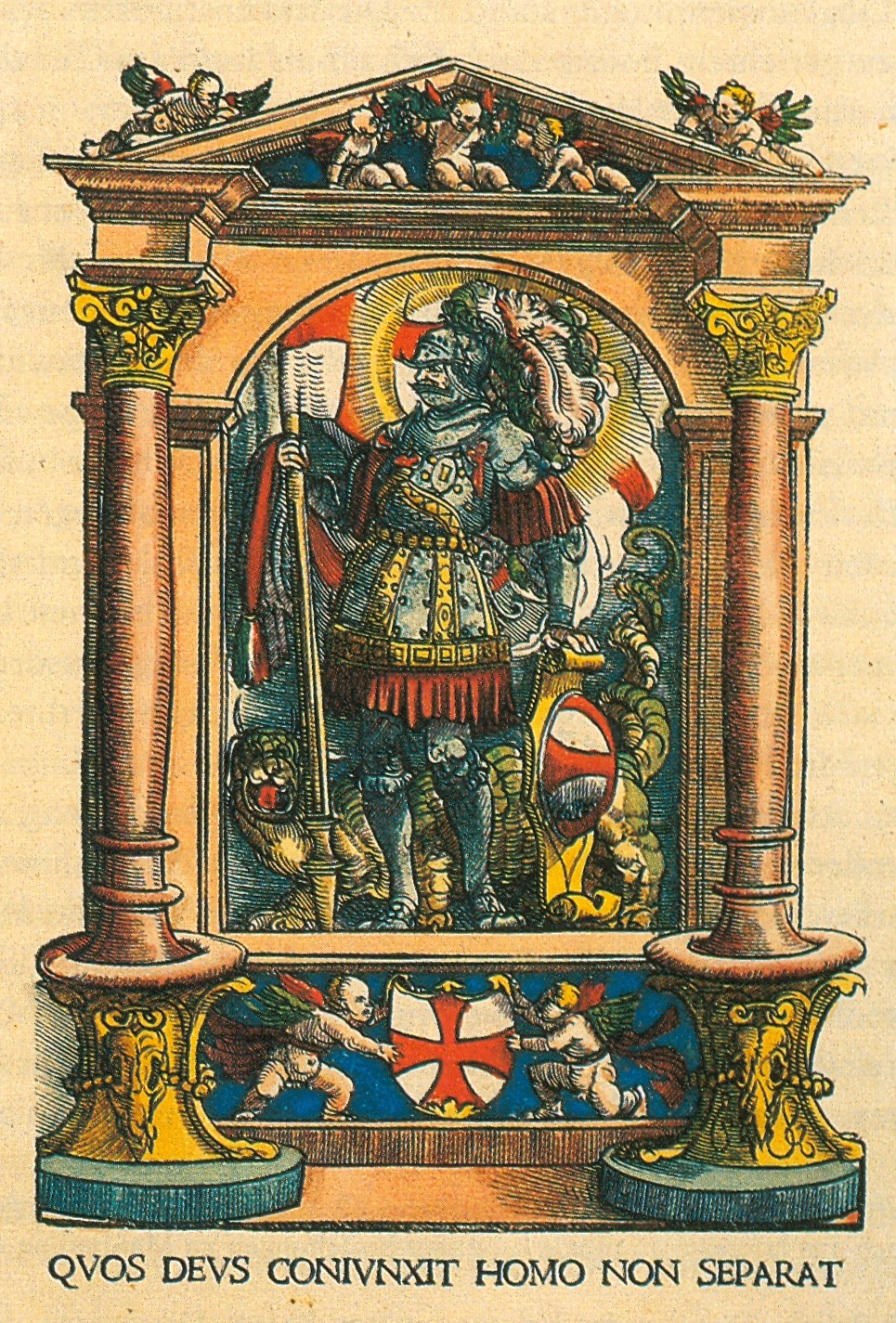|
Sebastian Lotzer
Sebastian Lotzer (c. 1490 – after 1525) was born in Horb am Neckar. He was a furrier by trade. During his journeyman years, while in Memmingen, he became secretary to the ''Baltringer Haufen'', a peasant army during the German Peasants' War. Lotzer was heavily influenced by theologian Christoph Schappeler. In 1525, representing the 27 villages of the territory of Memmingen he drew up the Memmingen Articles, and shortly afterwards, in conjunction with the Christian Confederation, the Twelve Articles. Following the defeat of the peasants by the Swabian League Lotzer had to flee from Memmingen in April 1525. He was last heard of in St. Gallen , neighboring_municipalities = Eggersriet, Gaiserwald, Gossau, Herisau (AR), Mörschwil, Speicher (AR), Stein (AR), Teufen (AR), Untereggen, Wittenbach , twintowns = Liberec (Czech Republic) , website .... His date of death is unknown. External links * Year of death unknown 1490 births ... [...More Info...] [...Related Items...] OR: [Wikipedia] [Google] [Baidu] |
Horb Am Neckar
Horb am Neckar is a town in the southwest of the German state of Baden-Württemberg. It is located on the Neckar river, between Offenburg to the west (about away) and Tübingen to the east (about away). It has around 25,000 inhabitants, of whom about 6,000 live in the main town of Horb, and the remainder in 18 associated villages and districts which form part of the same municipality. If the entire municipality is counted, it is the largest town in the District of Freudenstadt. Since 1 January 1981 Horb am Neckar has had the status of a ''Große Kreisstadt'', serving as a mid-sized center within the Northern Black Forest Region of the Karlsruhe Administrative Region. It also belongs to the "Cooperative Zone" of the Stuttgart Metropolitan Region. Horb am Neckar operates a combined administration with the neighbouring communities of Empfingen and Eutingen im Gäu. Geography Horb lies on the eastern margin of the northern part of the Black Forest at the Neckar. The well-preserve ... [...More Info...] [...Related Items...] OR: [Wikipedia] [Google] [Baidu] |
Furrier
Fur clothing is clothing made from the preserved skins of mammals. Fur is one of the oldest forms of clothing, and is thought to have been widely used by people for at least 120,000 years. The term 'fur' is often used to refer to a specific item of clothing such as a coat, wrap, or shawl made from the fur of animals. Humans wear fur garments to protect them from cold climates and wind chill, but documented evidence of fur as a marker of social status as far back as 2,000-years ago with Ancient Egypt, ancient Egyptian emperors and high priests wearing the skins of Leopard, leopards. Historically in European and Middle Eastern cultures fur garments often had the fur facing inwards with cloth on the exterior of the jacket, but in the 19th century a trend for wearing seal fur coats with the fur facing outwards became the trend. World wide both styles are popular, with fur linings offering more thermal benefits and exterior furs serving more of a fashionable purpose. History ... [...More Info...] [...Related Items...] OR: [Wikipedia] [Google] [Baidu] |
Journeyman Years
In a certain tradition, the journeyman years () are a time of travel for several years after completing apprenticeship as a craftsman. The tradition dates back to medieval times and is still alive in France, Scandinavia and the German-speaking countries. Normally three years and one day is the minimum period of journeyman/woman. Crafts include roofing, metalworking, woodcarving, carpentry and joinery, and even millinery and musical instrument making/organ building. In the Middle Ages and Renaissance, when the guild system still controlled professions in the visual arts, the ''wanderjahre'' was taken by painters, mason-architects and goldsmiths, and was highly important for the transmission of artistic style around Europe. The development of late modern nations and their borders within Europe did not have much effect until the 19th century. Historic roots In medieval times the apprentice was bound to his master for a number of years. He lived with the master as a member of ... [...More Info...] [...Related Items...] OR: [Wikipedia] [Google] [Baidu] |
Memmingen
Memmingen (; Swabian: ''Memmenge'') is a town in Swabia, Bavaria, Germany. It is the economic, educational and administrative centre of the Danube-Iller region. To the west the town is flanked by the Iller, the river that marks the Baden-Württemberg border. To the north, east and south the town is surrounded by the district of Unterallgäu (Lower Allgäu). With about 42,000 inhabitants, Memmingen is the 5th biggest town in the administrative region of Swabia. The origins of the town go back to the Roman Empire. The old town, with its many courtyards, castles and patricians' houses, palaces and fortifications is one of the best preserved in southern Germany. With good transport links by road, rail and air, it is the transport hub for Upper Swabia and Central Swabia, and the Allgäu. Due to its proximity to the Allgäu region, Memmingen is often called the Gateway to the Allgäu (''Tor zum Allgäu''). The town motto is ''Memmingen – Stadt mit Perspektiven'' ("Memminge ... [...More Info...] [...Related Items...] OR: [Wikipedia] [Google] [Baidu] |
Baltringer Haufen
The Baltringer Haufen (also spelled ''Baltringer Haufe'', German for Baltringen Band, Baltringen Troop or Baltringen Mob) was prominent among several armed groups of peasants and craftsmen during the German Peasants' War of 1524–1525. The name derived from the small Upper Swabian village of Baltringen, which lies approximately south of Ulm in the district of Biberach, Germany. In the early modern period the term ''Haufe(n)'' (literally: heap) denoted a lightly organised military formation particularly with regard to Landsknecht regiments. Formation of the ''Baltringer Haufen'' According to the account of a nun from nearby Heggbach Abbey, local peasants assembled and conferred in an inn at Baltringen for the first time on Christmas Eve 1524. From then on regular meetings took place, the number of attendants reaching 80 at the beginning of February 1525. Whereas in other regions the peasants met and discussed at markets, in Baltringen this occurred during the ''Fastnach ... [...More Info...] [...Related Items...] OR: [Wikipedia] [Google] [Baidu] |
German Peasants' War
The German Peasants' War, Great Peasants' War or Great Peasants' Revolt (german: Deutscher Bauernkrieg) was a widespread popular revolt in some German-speaking areas in Central Europe from 1524 to 1525. It failed because of intense opposition from the aristocracy, who slaughtered up to 100,000 of the 300,000 poorly armed peasants and farmers. The survivors were fined and achieved few, if any, of their goals. Like the preceding Bundschuh movement and the Hussite Wars, the war consisted of a series of both economic and religious revolts in which peasants and farmers, often supported by Anabaptist clergy, took the lead. The German Peasants' War was Europe's largest and most widespread popular uprising before the French Revolution of 1789. The fighting was at its height in the middle of 1525. The war began with separate insurrections, beginning in the southwestern part of what is now Germany and Alsace, and spread in subsequent insurrections to the central and eastern areas of Ge ... [...More Info...] [...Related Items...] OR: [Wikipedia] [Google] [Baidu] |
Christoph Schappeler
Christoph Schappeler (1472 – August 25, 1551) was a German religious figure, reformer, and a preacher at St. Martin's in Memmingen during the early 16th century and during the Protestant Reformation and the German Peasants' War. He tended to side with the poor, causing the senate to regulate his sermons in 1516. However, by 1521 the climate had changed such that the senate was giving him support. When he was excommunicated in 1524, the Senate refused to follow the bishop's order to have him banished. It is believed that Schappeler and Sebastian Lotzer wrote ''The Twelve Articles: The Just and Fundamental Articles of All the Peasantry and Tenants of Spiritual and Temporal Powers by Whom They Think Themselves Oppressed'' in early 1525.Pettegree, Andrew, ed. (2004)''The Reformation: Critical Concepts in Historical Studies'' Vol. 1, pp. 344–45. Routledge. Within two months of its initial publication in Memmingen, twenty-five thousand copies of the ''Twelve Articles'' had sprea ... [...More Info...] [...Related Items...] OR: [Wikipedia] [Google] [Baidu] |
Memmingen Articles
Memmingen (; Swabian: ''Memmenge'') is a town in Swabia, Bavaria, Germany. It is the economic, educational and administrative centre of the Danube-Iller region. To the west the town is flanked by the Iller, the river that marks the Baden-Württemberg border. To the north, east and south the town is surrounded by the district of Unterallgäu (Lower Allgäu). With about 42,000 inhabitants, Memmingen is the 5th biggest town in the administrative region of Swabia. The origins of the town go back to the Roman Empire. The old town, with its many courtyards, castles and patricians' houses, palaces and fortifications is one of the best preserved in southern Germany. With good transport links by road, rail and air, it is the transport hub for Upper Swabia and Central Swabia, and the Allgäu. Due to its proximity to the Allgäu region, Memmingen is often called the Gateway to the Allgäu (''Tor zum Allgäu''). The town motto is ''Memmingen – Stadt mit Perspektiven'' ("Memminge ... [...More Info...] [...Related Items...] OR: [Wikipedia] [Google] [Baidu] |
Christian Confederation
Christians () are people who follow or adhere to Christianity, a monotheistic Abrahamic religion based on the life and teachings of Jesus Christ. The words ''Christ'' and ''Christian'' derive from the Koine Greek title ''Christós'' (Χριστός), a translation of the Biblical Hebrew term ''mashiach'' (מָשִׁיחַ) (usually rendered as ''messiah'' in English). While there are diverse interpretations of Christianity which sometimes conflict, they are united in believing that Jesus has a unique significance. The term ''Christian'' used as an adjective is descriptive of anything associated with Christianity or Christian churches, or in a proverbial sense "all that is noble, and good, and Christ-like." It does not have a meaning of 'of Christ' or 'related or pertaining to Christ'. According to a 2011 Pew Research Center survey, there were 2.2 billion Christians around the world in 2010, up from about 600 million in 1910. Today, about 37% of all Christians live in the A ... [...More Info...] [...Related Items...] OR: [Wikipedia] [Google] [Baidu] |
Twelve Articles
The Twelve Articles (German ''Zwölf Artikel'') were part of the peasants' demands of the Swabian League during the German Peasants' War of 1525. They are considered the first draft of human rights and civil liberties in continental Europe after the Roman Empire. The gatherings in the process of drafting them are considered to be the first constituent assembly on German soil. Incidents On 6 March 1525 about 50 representatives of the Upper Swabian Peasants Groups (of the Baltringer Mob, the Allgäuer Mob, and the Lake Constance Mob), met in Memmingen to deliberate upon their common stance against the Swabian League. One day later and after difficult negotiations, they proclaimed the Christian Association, an Upper Swabian Peasants' Confederation. The peasants met again on 15 and 20 March 1525 in Memmingen and, after some additional deliberation, adopted the Twelve Articles and the Federal Order (Bundesordnung). The Articles and the Order are only examples among many similar progra ... [...More Info...] [...Related Items...] OR: [Wikipedia] [Google] [Baidu] |
Swabian League
The Swabian League (''Schwäbischer Bund'') was a mutual defence and peace keeping association of Imperial State, Imperial Estates – free Imperial cities, prelates, principalities and knights – principally in the territory of the early medieval stem duchy of Duchy of Swabia, Swabia established on 14 February 1488. The religious revolution of the Protestant Reformation divided its members, and the Swabian League disbanded in 1534. History The Swabian League was established in 1488 at the behest of Emperor Frederick III, Holy Roman Emperor, Frederick III of Habsburg and supported as well by Bertold von Henneberg-Römhild, Bertold von Henneberg-Römhild, archbishop of Mainz, whose conciliar rather than monarchic view of the ''Reich'' often put him at odds with Frederick's successor Maximilian I, Holy Roman Emperor, Maximilian. The Swabian League cooperated towards the keeping of the imperial peace and at least in the beginning curbing the expansionist History of Bavaria, Bavaria ... [...More Info...] [...Related Items...] OR: [Wikipedia] [Google] [Baidu] |

.jpg)
_(cut).jpg)






